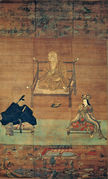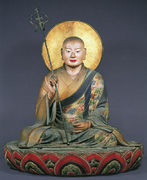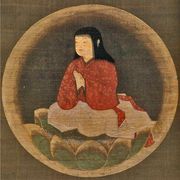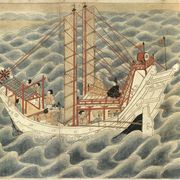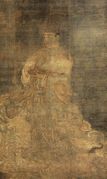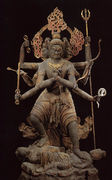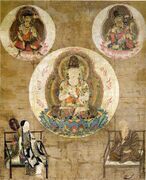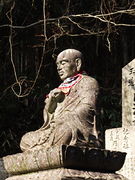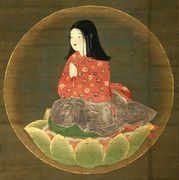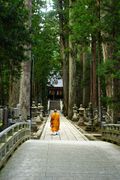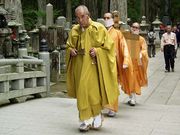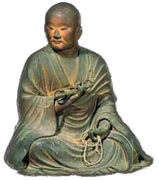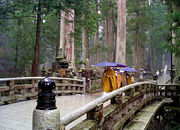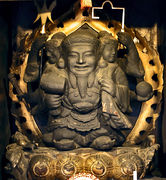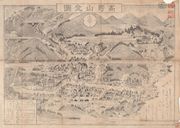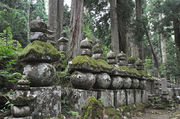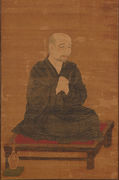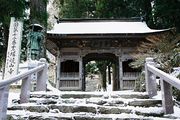Geschichte/Kukai/Kukais Initiation: Unterschied zwischen den Versionen
K (Schützte „Geschichte:Kukai/Kukais Initiation“: Weiterleitung auf geschützte Seite ([edit=sysop] (unbeschränkt) [move=sysop] (unbeschränkt))) |
|
(kein Unterschied)
| |
Version vom 30. September 2010, 10:49 Uhr
Kukais Initiation
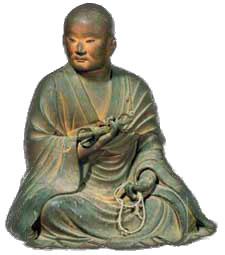
Holzstatue, Kamakura-Zeit.
774–835, Gründer des Shingon Buddhismus; Eigennamen Saeki Mao, Ehrennamen Kōbō Daishi
Der Begriff „Kūkai“ wird in diesem Handbuch auf folgenden Seiten erwähnt:
Glossarseiten
Bilder
beschreibt die mystischen Erlebnisse seiner Initiation unter seinem chinesischen Meister
in einem Bericht an den Tenno folgendermaßen:
One day, in the course of my calls on eminent Buddhist teachers of the capital, I happened by chance to meet the abbot of the East Pagoda Hall of the Green Dragon Temple. This great priest, whose Buddhist name was Hui-kuo, was the chosen disciple of the Indian master Amoghavajra. His virtue aroused the reverence of his age; his teachings were lofty enough to guide emperors. Three sovereigns revered him as their master and were ordained by him. The four classes of believers looked up to him for instruction in the esoteric teachings.
I called on the abbot in the company of five or six monks from the Hsi-ming Temple. As soon as he saw me he smiled with pleasure, and he joyfully said, 'I knew that you would come! I have been waiting for such a long time. What pleasure it gives me to look on you today at last! My life is drawing to an end, and until you came there was no one to whom I could transmit the teachings. Go without delay to the ordination altar with incense and a flower.' I returned to the temple where I had been staying and got the things which were necessary for the ceremony. It was early in the sixth moon, then, that I entered the ordination chamber. I stood in front of the Womb Mandala [Garbha Mandala] and cast my flower in the prescribed manner. By chance it fell on the body of the Buddha Vairochana in the centre. The master exclaimed in delight, 'How amazing! How perfectly amazing!' He repeated this three or four times in joy and wonder. I was then given the fivefold baptism and received the instruction in the Three Mysteries that bring divine intercession. Next I was taught the Sanskrit formulas for the Womb Mandala, and learned the yoga contemplation on all the Honoured Ones.
Early in the seventh moon I entered the ordination chamber of the Diamond [Vajra] Mandala for a second baptism. When I cast my flower it fell on Vairochana again, and the abbot marvelled as he had before. I also received ordination as an acharya early in the following month.
